Travel
Car Shipping Industry Growth in Hawaii: Trends and Opportunities
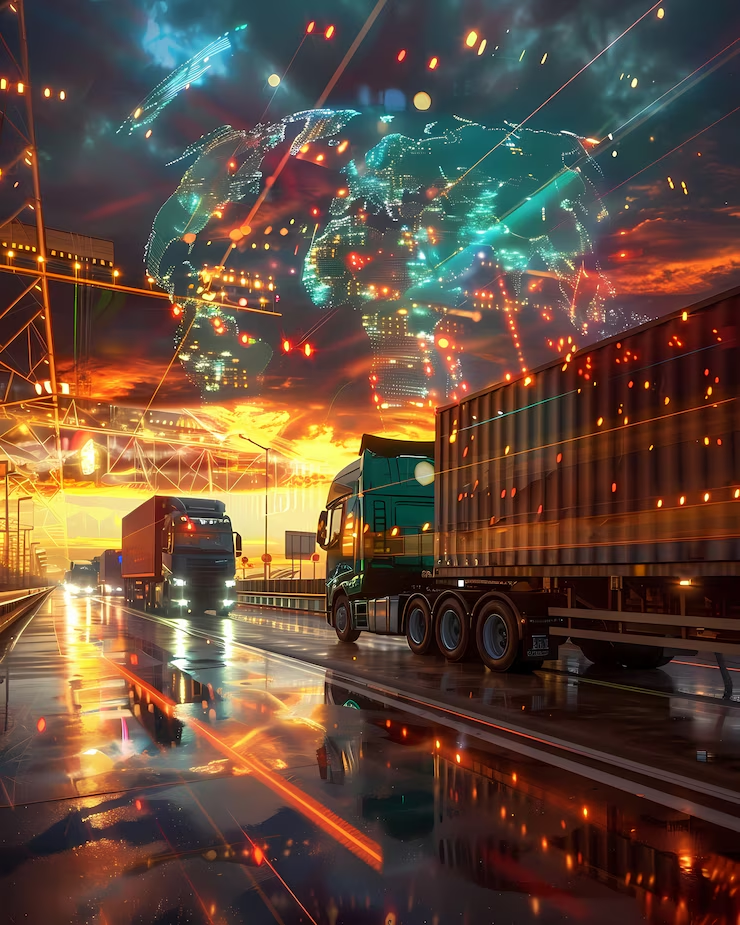
The car shipping industry in Hawaii is more than just about moving vehicles from one island to another; it’s a pivotal part of everyday life for residents and visitors who rely on their cars to explore the islands. As trends shift and the demand for car shipping grows, there are exciting developments on the horizon. Companies are not only adjusting to increased relocation numbers but also finding new ways to embrace eco-friendly technologies. In this article, we’ll dive into the factors driving this growth, explore the challenges faced by shipping companies, and highlight how these businesses are innovating to meet the evolving needs of Hawaii’s unique market. Let’s take a closer look at what’s happening in Hawaii’s car shipping scene!
The car shipping industry in Hawaii is experiencing growth due to increased interisland shipping activity, supported by companies like Young Brothers and Pasha Hawaii. Additionally, a rising demand for eco-friendly solutions and investment in renewable energy at ports are driving advancements in operational efficiency within the sector.
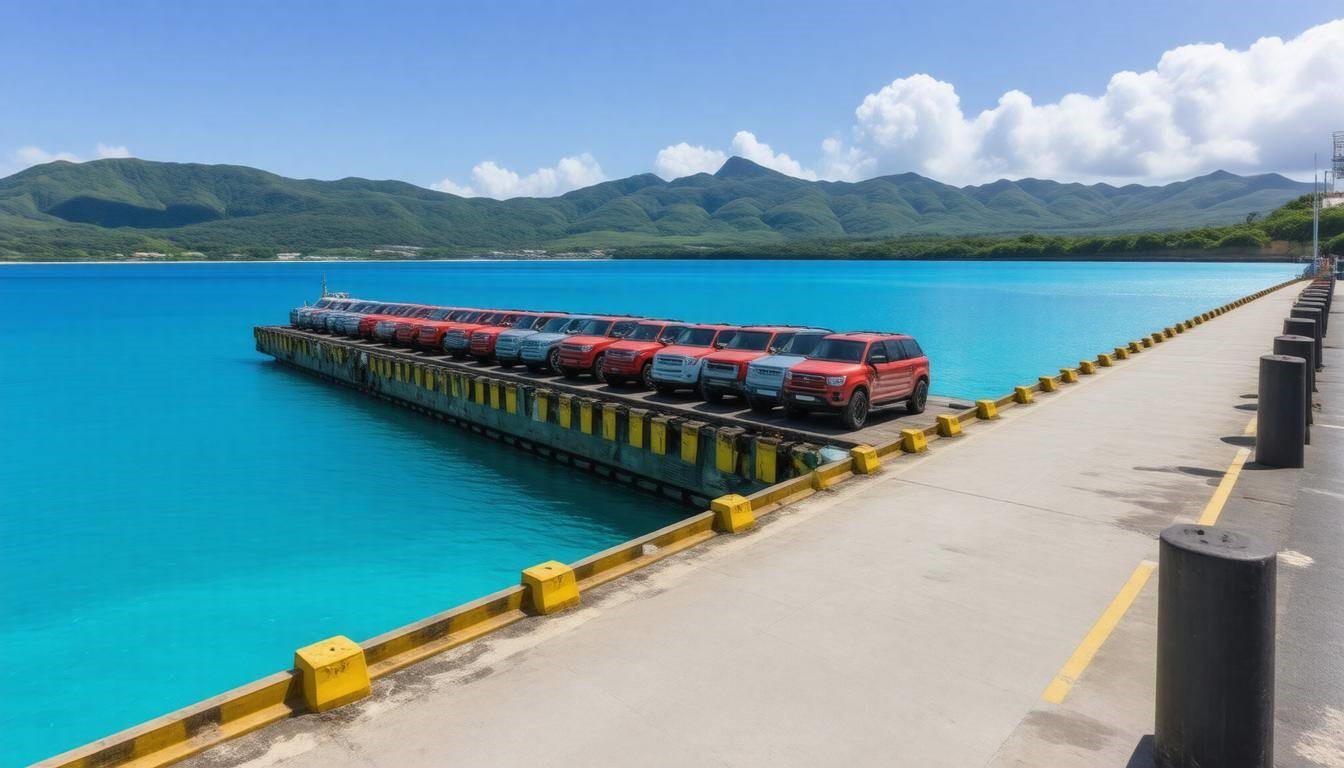
Car Shipping Industry Growth in Hawaii
The car shipping industry in Hawaii thrives despite occasional fluctuations in the global economy, largely due to several key factors that influence demand. One of the most significant trends has been the increased number of relocations to the islands. Many people are drawn to Hawaii for its unique lifestyle, stunning landscapes, and vibrant culture. As more individuals and families make the move to this paradise, the need for vehicle transportation has grown correspondingly. In fact, cars represent one of the most critical imports after petroleum, underscoring their importance in daily life on the islands.
While it may seem like a simple matter of shipping cars from point A to B, much more intricate logistics are involved. The complex nature of keeping supply chains intact ensures that once a vehicle arrives at Hawaiian ports, it is swiftly transferred to its final destination without delay. This can mean navigating various local regulations and ensuring compliance with environmental standards—all while upholding customer satisfaction. Fortunately, companies in this sector have adopted modern shipping technologies that streamline the process and offer improved efficiency.
Not only is there an increase in relocations, but tourism remains a fundamental component driving the growth of Hawaii’s car shipping industry. Visitors frequently rent vehicles to explore diverse attractions across the islands. This consistent influx reinforces demand for reliable transportation options and spurs discussions around sustainability initiatives aimed at reducing emissions from conventional vehicles.
For example, businesses like Pasha have made investments in eco-friendly technology such as natural-gas-powered vessels that are leading the charge toward sustainable shipping practices.
“Significant investments are being made toward eco-friendly technology…to reduce emissions,” emphasizes George Pasha IV, CEO of Pasha Hawaii.
Still, challenges persist within this rapidly evolving landscape. Economic factors such as inflation and rising interest rates can affect discretionary spending and impact consumer choices regarding vehicle imports. Companies like Matson have reported lower volumes in container shipping compared to previous pandemic spikes, warning about potential uncertainties ahead. Thus, market participants must remain vigilant and adaptable.
To capitalize on promising prospects within this growing sector, stakeholders should consider engaging with local communities to build relationships rooted in trust and transparency while promoting sustainable practices. Strategies that prioritize environmentally friendly operations not only align with today’s consumer preferences but also pave the way for future advancements.
The outlook for Hawaii’s car shipping industry indicates ongoing growth opportunities stemming from shifts in population dynamics and continued investment in sustainability initiatives.
As we continue exploring this sector’s landscape, it’s essential to understand what forces are propelling these developments forward and how they will shape future operations.
Drivers of Expansion
One of the most significant drivers is the increase in relocations. Hawaii’s stunning landscapes and relaxed lifestyle make it a prime spot for individuals and families seeking a fresh start. As more people move to the islands, the demand for car shipping services skyrockets. Rather than buying new vehicles locally—often at inflated prices—new residents tend to prefer bringing their own cars from the mainland. This not only saves money but also allows them to maintain some sense of familiarity as they transition to island living.
It’s fascinating to see how this trend reflects a common sentiment: moving can be both exciting and daunting, so having your reliable vehicle adds a sense of comfort during such a significant change.
Yet, it’s not just relocation that fuels this industry; advancements in shipping technology play a vital role as well.
Advancements in Shipping Technology
The evolution of shipping methods has transformed the way vehicles are transported. Innovations like natural-gas-powered containerships, such as Pasha Hawaii’s MV George III, exemplify how technology is paving the way for environmentally friendly practices in an industry that once relied heavily on fossil fuels. These state-of-the-art vessels not only reduce emissions but also improve fuel efficiency, leading to lower operational costs.
This shift in technology resonates with a growing consciousness about environmental sustainability. Customers increasingly appreciate knowing that they are actively choosing services that minimize their carbon footprint while benefiting from improved service speed and reliability.
The strategic incorporation of Internet of Things (IoT) technologies further enhances operational efficiency. These smart devices facilitate real-time tracking of vehicles throughout the shipping process—a feature increasingly demanded by consumers who want assurance regarding their car’s safety and status during transit. As a result, transport companies can optimize routes, reducing fuel consumption and ensuring timely deliveries.
In essence, the marriage between advanced technology and customer preferences creates an environment ripe for innovation in the car shipping industry.
Furthermore, as these technological advancements take hold, regulatory compliance becomes just as essential for maintaining operational success.
Compliance with Regulations
Ongoing compliance with evolving regulations around driving hours, safety procedures, and reporting standards adds another layer of complexity to the industry. Transport companies must navigate these regulations carefully; failure to do so could result in costly fines or disruptions in service. Thus, companies prioritize staying informed about regulatory changes while establishing systems that ensure adherence without compromising efficiency.
The interplay between adhering to regulations while adopting new technologies presents both challenges and opportunities for growth. For instance, Transportation Management Systems (TMS) streamline logistics by providing comprehensive tracking solutions that help firms meet regulatory demands without excess overhead.
Understanding both consumer behavior and technological innovations is crucial for those looking to succeed in this expanding market. Keeping pace with these drivers of expansion will enable businesses not only to survive but thrive amidst future challenges in Hawaii’s vibrant car shipping landscape.
With these insights into the shifting dynamics of car shipping, we can now explore some of the leading players that shape this competitive landscape.
Top Car Shipping Companies
Several notable companies play a pivotal role in Hawaii’s car shipping industry, each with its unique strengths and contributions. One standout player is Pasha Hawaii, founded by the Pasha family, which specializes in local service with a focus on environmental sustainability. They have recently taken a significant step toward greener shipping solutions with the launch of the MV George III, a natural-gas-powered containership that underscores their commitment to innovation and eco-friendly practices. This positions Pasha Hawaii not just as a leader in logistics but also as a champion of environmental responsibility, demonstrating how modern technology can serve traditional industries.
Young Brothers
Another key player is Young Brothers, boasting an impressive 120 years of experience in interisland shipping. With 12 weekly sailings across multiple Hawaiian ports, they ensure reliable transport services while also providing vital support to more than 85 local farmers. Their commitment to serving the community reflects their integral role in Hawaii’s economic landscape. By facilitating the movement of goods between islands, Young Brothers contributes significantly to local agriculture and sustains the livelihoods of many residents who rely on these shipping routes.
While other companies may approach market strategies differently, it’s crucial to recognize that all these entities are adapting to shifting economic conditions.
Matson
Lastly, we turn our attention to Matson, a company that links its economic growth projections closely to the booming tourism industry in Hawaii. Despite its enduring significance within the sector, Matson faces challenges due to weakening economic conditions. They anticipate a potential retraction in shipping volumes, emphasizing the necessity for strategic planning in response to fluctuating markets. As they navigate these choppy waters, Matson showcases adaptability while finding new efficiencies, ensuring their ongoing relevance despite external factors influencing operations.
Understanding how these companies operate provides valuable insight into the wider dynamics shaping the car shipping market in Hawaii.
Together, these companies highlight the multi-faceted nature of car shipping services available in Hawaii. Each brings different experiences, approaches, and philosophies toward transportation. For anyone looking to engage in these services—whether for personal use or business—it’s important to consider not only pricing but also reliability, timeliness, and commitment to community. The diverse capabilities of companies like Pasha Hawaii, Young Brothers, and Matson ensure efficient vehicle transportation while maintaining safety standards amidst Hawaii’s unique geographical landscape.
With these foundational insights into industry players established, we can now explore the broader implications that arise from their operational strategies.
Economic Effects
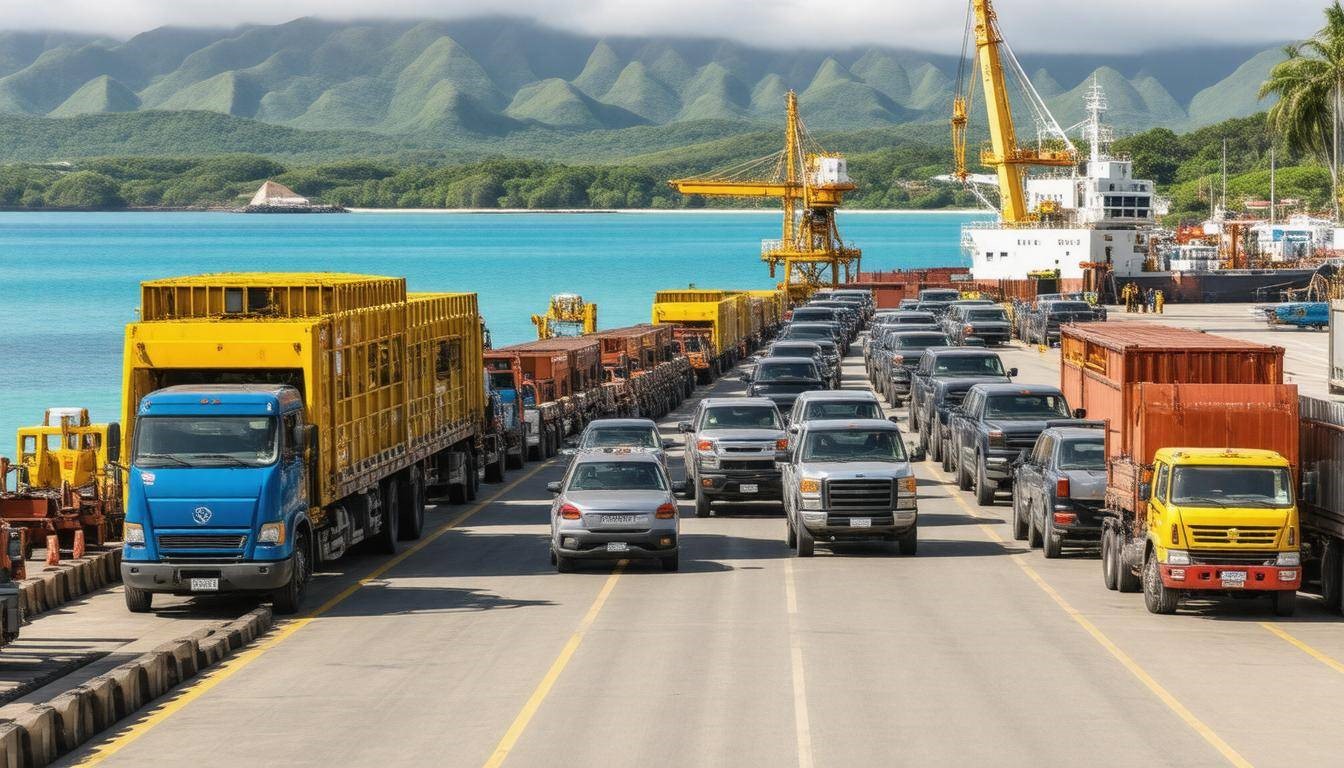
The growth of the car shipping industry in Hawaii has extended its influence far beyond just transporting vehicles. It acts as a crucial pillar for the local economy, generating substantial revenue while creating essential jobs and supporting various auxiliary businesses like dealerships and auto repair shops.
When you consider the fact that Hawaii is ranked 49th among U.S. states for imports, primarily reliant on petroleum and cars, it’s evident that this industry plays an integral role in maintaining the flow of goods that residents rely on daily.
It’s not merely about statistics and numbers; each shipment creates a domino effect that uplifts various sectors. From transportation to retail, the infusion of imported vehicles enriches consumer choices and drives competition, benefiting consumers. Local car dealerships thrive as they sell a steady supply of these imported cars, while mechanic shops see increased business as more vehicles require services.
Notably, local economic data reveals that robust activities within the car shipping sector support more than 450 direct and indirect jobs, illustrating how interconnected our economy truly is.
| Economic Effects | Impact Level |
| Revenue Generation | High |
| Job Creation | Moderate |
| Support to Ancillary Businesses | High |
Moreover, this industry’s ripple effect encourages ancillary businesses to thrive. Consider the mechanics who service these imports; they not only fix cars but are also integral in keeping transportation affordable and sustainable in Hawaii, where public transport options can be limited—especially on the islands with expansive landscapes and diverse terrains.
While these benefits highlight a thriving sector, it’s essential to recognize the challenges that could impact operations within this industry moving forward.
Infrastructure and Logistic Challenges
Despite the growth of the car shipping industry in Hawaii, infrastructure and logistical hurdles present significant barriers to progress. One glaring example is the Kapalama Container Terminal project, intended to bolster shipping capacity. While the enhancements promise to improve operational efficiency, integrating low-emission technologies remains a slow endeavor. The reality is that retrofitting older structures to align with newer environmental regulations is time-consuming and financially burdensome.
Adapting infrastructure can often feel akin to trying to fit a square peg in a round hole; it requires innovative approaches and creative engineering solutions.
This misalignment creates a domino effect throughout the entire shipping process. For instance, delays in upgrading terminals lead to inefficiencies that echo across multiple platforms: from increased shipping times for consumers to elevated costs for transport companies forced to adapt to suboptimal conditions. When shipment schedules are thrown off balance, it affects not just the car buyers waiting for their vehicles but also the broader economic dynamics at play.
In addition to infrastructural issues, logistical challenges compound the difficulties faced by the industry. Hawaii experiences unpredictable weather patterns that can wreak havoc on shipping timelines. Storms or heavy rain can lead to port closures, causing potential backups that ripple through an already stretched supply chain. Limited docking spaces add another layer of complexity; when there are insufficient berths for incoming vessels, shipping companies may face extended wait times—resulting in additional costs and lost opportunities.
Navigating these hurdles requires forward-thinking strategies and innovative solutions. Companies are increasingly looking toward modern technology solutions such as automated systems for better scheduling and predictive analytics for improving delivery timelines. By making data-driven decisions, shippers can enhance efficiency and mitigate risks associated with unpredictable weather or infrastructure delays. Embracing technology will be pivotal in overcoming logistical failures while effectively meeting consumer demands.
As we consider these obstacles, it’s essential to recognize the emerging prospects within the industry that invite stakeholders to rethink conventional methods and pursue fresh avenues for growth.
Emerging Opportunities
Multiple growth avenues are emerging within Hawaii’s car shipping industry, driven by a combination of infrastructure enhancements, technological advancements, and shifting consumer demands.
One of the primary areas for growth lies in infrastructure improvements. Significant investments in this sector not only elevate the level of service provided but also open up numerous doors for companies involved in terminal development and logistics management. For example, with the Hawaiian Department of Transportation receiving $47.3 million for eco-friendly technology at ports, businesses can align themselves with this initiative to ensure a more efficient and sustainable operation in the future.
This investment signals a commitment to sustainable practices, demonstrating that the industry is not just about profit, but about protecting the delicate environment of the islands while enhancing operational capabilities.
Moreover, as these infrastructure advancements unfold, companies should also pay close attention to technological advancements that are revolutionizing car shipping operations.
Technological Advancements
Modern booking and tracking systems are becoming essential tools for enhancing service efficiency and customer satisfaction. By adopting these modern technologies, businesses can enable real-time tracking for shipments, which is increasingly becoming a standard expectation among consumers today. This means that clients can stay informed about their vehicle’s location throughout the shipping process, fostering a sense of trust and transparency.
When customers feel confident in knowing where their car is at any given moment, their overall experience improves considerably.
| Opportunity | Description |
| Investment in eco-friendly technology | Utilize renewable resources and improve efficiency at terminals. |
| Real-time tracking systems | Offer customers up-to-date information on their vehicle’s status. |
| Renewable energy solutions | Integrate solar and wind power into logistics to reduce emissions. |
Additionally, these advancements directly correlate with an increasing demand for renewable energy solutions within the supply chain.
Implementing green initiatives is not merely a trend; it has become an expectation from environmentally conscious consumers. Companies like Young Brothers are leading by example, investing heavily in sustainability with projects slated to enhance their fleet capabilities while reducing ecological footprints.
In doing so, they position themselves not just as service providers but as responsible members of the community who prioritize both customer satisfaction and environmental health.
Recognizing these evolving trends allows companies to adapt effectively. As they improve infrastructure, embrace technology, and commit to sustainability, they will be strategically prepared for what lies ahead in this dynamic industry.
Anticipating shifts within this market landscape reveals potential developments that could redefine operations and strategies moving forward.
Future Predictions
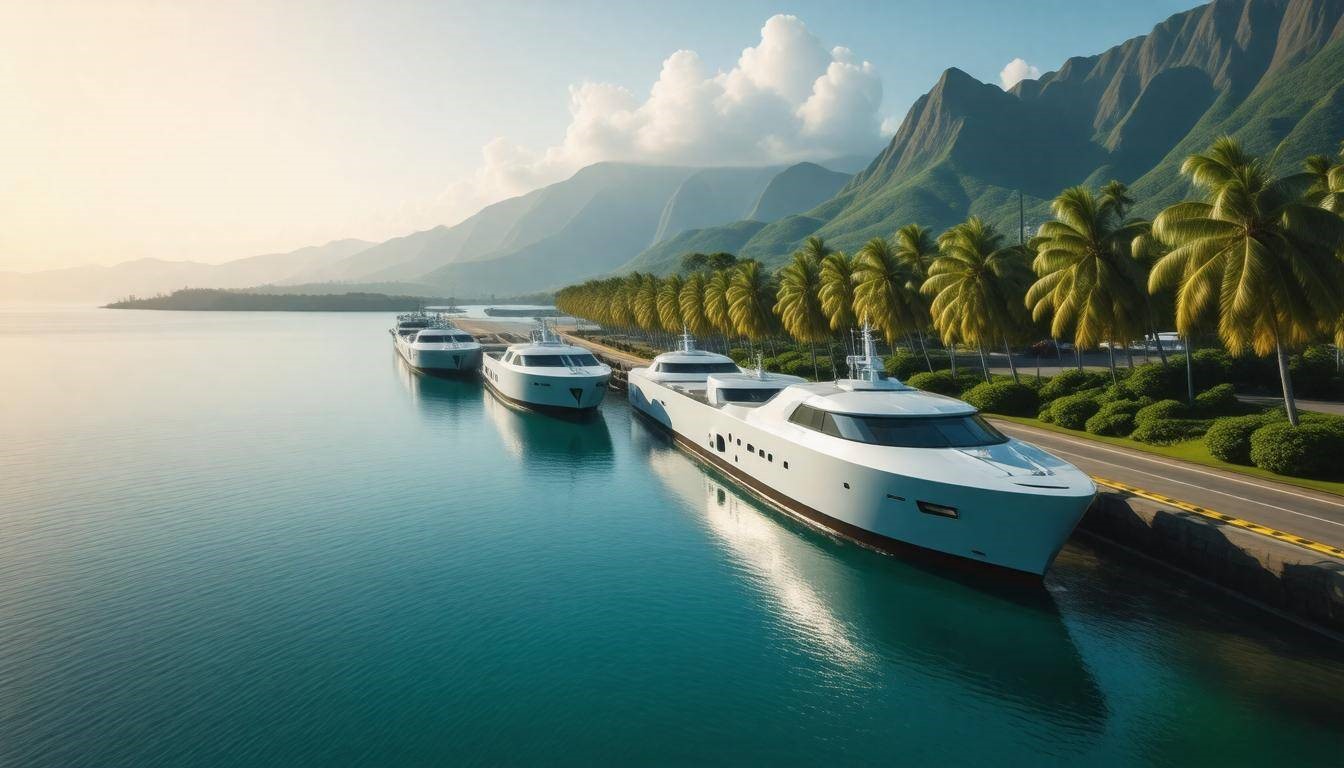
The car shipping industry in Hawaii stands at a pivotal juncture as it gears up for notable expansion. Experts forecast that infrastructure enhancements, such as the improvement of ports and local transport networks, coupled with rapid technological advancements, will not only propel growth but also set new benchmarks in service efficiency.
One key development to watch is the arrival of Pasha Hawaii’s MV Janet Marie, a vessel expected to transform shipping logistics and fuel competition among providers. With its modern design optimized for cargo efficiency, this new addition to the fleet symbolizes a pressing commitment to serve Hawaii’s unique geography more effectively.
As we consider these developments, it’s crucial to discuss how demographic changes are influencing demand.
With Hawaii continuing to attract new residents and tourists alike, there’s no doubt that the demand for car shipping services is on the rise. The influx of fresh faces typically leads to a corresponding increase in vehicle registrations; after all, relocating families and new visitors often require reliable means of transportation.
This growing demand presents an invaluable opportunity for companies in the sector. However, it is essential for them to adapt proactively to emerging technologies and logistical hurdles if they aim to maintain their competitive edge. Companies that harness innovations such as AI-driven route optimization or IoT applications for real-time tracking are likely to see significant advantages over those who resist change.
To further illustrate the potential market dynamics, it’s important to note that the global car transportation market is projected to reach $1.0052 billion by 2027. This substantial anticipated growth confirms that the industry is not just stabilizing but actively expanding, presenting numerous opportunities for new entrants willing to innovate.
On top of external growth factors, internal industry standards are shifting as well. As regulatory compliance continues to evolve—particularly concerning environmental mandates—businesses are compelled to rethink their practices to align with new requirements.
Those forward-thinking companies that integrate electric and autonomous transport vehicles into their fleets stand to benefit not only from potentially reduced emissions but enhanced operational safety as well.
In everything from regular operational procedures to technological integration, the adaptability of businesses will ultimately determine who thrives in this developing landscape. The future holds both challenges and rewards; thus, aligning with industry trends while maintaining a focus on customer service will be essential.
For stakeholders across the board, embracing these changes now could mean the difference between being left behind or leading the market tomorrow.
As Hawaii’s car shipping industry evolves, proactive adaptation and innovative strategies will unlock unprecedented opportunities for growth and success.
Travel
How to Avoid Tourist Crowds in Photos at Popular Places in Rome
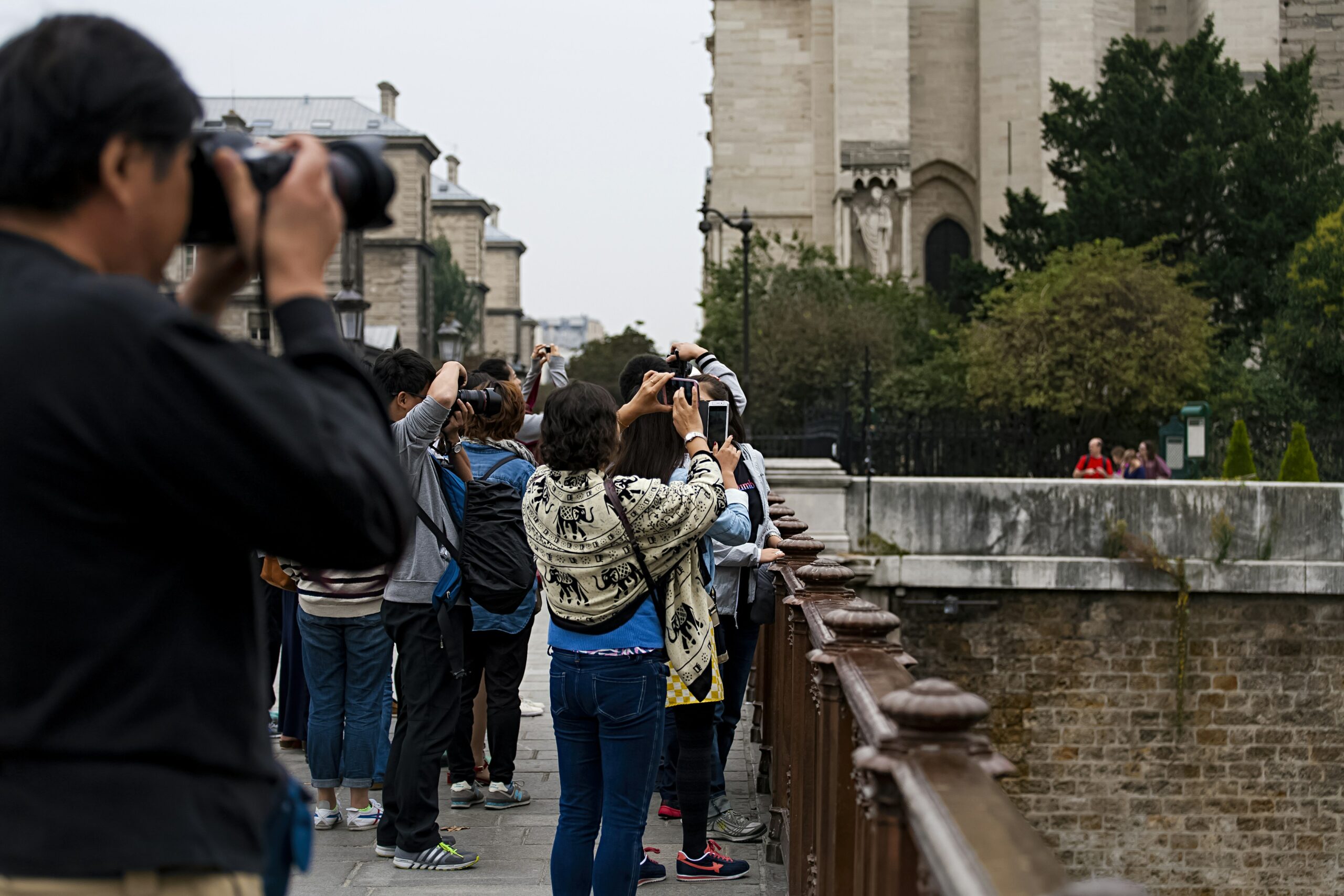
Rome, Italy, is a dream destination for many travelers. The city is home to some of the most iconic landmarks in the world, such as the Colosseum, the Roman Forum, and the Vatican. While these sites are undeniably stunning, they can also be overcrowded, especially during peak tourist seasons. As a Rome Italy photographer, capturing the beauty of the Eternal City without the hustle and bustle of large crowds can be challenging. However, with a few expert techniques and the right planning, it is entirely possible to take stunning, crowd-free photos at some of Rome’s most popular locations.
In this guide, we’ll share insider tips on how to avoid tourist crowds and photograph Rome’s most famous landmarks in all their glory. Whether you’re a seasoned photographer or an enthusiastic traveler with a camera, these strategies will help you capture Rome in its most serene form.
Timing is Everything
The key to avoiding crowds in Rome is timing. Popular tourist sites tend to be packed during certain hours of the day, especially around midday when most tourists arrive. To avoid these crowds and ensure the best possible lighting for your photos, you’ll need to plan your visit around the optimal times.
Early Morning Magic
One of the most effective ways to get a crowd-free shot is by getting up early. The early hours of the morning, right after sunrise, are the best time to capture iconic locations like the Colosseum, Trevi Fountain, and the Spanish Steps.
Why early mornings?
- The light is softer and more flattering, which makes for better photographs.
- Tourist crowds are sparse, allowing you to take clean shots without distractions.
- The air is cooler, and the city is quieter, giving you a more peaceful experience.
Arriving at these sites right when they open, or even a little before, will give you an exclusive opportunity to capture these locations at their best.
Golden Hour
Golden hour—the period just after sunrise or before sunset—offers some of the most beautiful natural light for photography. The light is warm and diffused, and it creates a magical atmosphere that makes for stunning photos. During golden hour, many of Rome’s most famous landmarks, such as the Pantheon and St. Peter’s Basilica, are bathed in beautiful light.
To make the most of golden hour:
- Research sunrise and sunset times in advance.
- Be ready to shoot about 30 minutes before and after the official sunrise or sunset time.
- Choose your location carefully to ensure the best angle for the light.
By planning your shoots during golden hour, you’ll avoid the harsh midday sunlight while also avoiding the crowds that usually appear later in the day.
Night Photography
While the morning may be the best time for some places, nighttime can also offer a unique opportunity to photograph Rome’s landmarks without large crowds. At night, many tourist attractions are illuminated, creating a different ambiance than what you would find during the day.
Places like the Trevi Fountain or the Colosseum are beautifully lit after dark, providing dramatic and atmospheric photos. Furthermore, these sites tend to be much quieter at night, giving you the space to capture long exposure shots without the interference of tourists.
Choosing the Right Location
In addition to timing, choosing the right spots for your photos can help you avoid large crowds. Many of Rome’s landmarks are extremely popular, so planning your itinerary wisely can make a significant difference in your ability to capture photos without distractions.
Lesser-Known Gems
While the Colosseum and the Vatican are obvious choices for photography, they can also be the most crowded. Fortunately, Rome is full of hidden gems that are just as beautiful but tend to attract fewer visitors. Consider exploring off-the-beaten-path locations such as:
- Villa Borghese Gardens: A peaceful park offering scenic views of Rome with fewer tourists.
- Gianicolo Hill (Janiculum Hill): For breathtaking panoramic views of the city, away from the usual crowds.
- Aventine Hill: A charming neighborhood with less foot traffic and beautiful views of the city, including the iconic keyhole view of St. Peter’s Basilica.
These lesser-known locations provide a more tranquil setting and can still offer spectacular photo opportunities.
Unique Angles and Perspectives
Instead of taking the traditional shot from the main entrance of a landmark, consider shooting from a different angle. For example:
- Capture the Colosseum from the rear, where fewer tourists gather.
- Photograph the Trevi Fountain from a side angle, which often results in more artistic shots.
- Use narrow alleyways and side streets to frame landmarks from a unique perspective.
By thinking creatively and exploring unconventional angles, you can capture images that stand out and avoid the typical tourist-filled shots.
Using the Right Gear
Having the right gear can help you make the most of your time and avoid distractions during a photo shoot. While it’s possible to take great photos with a smartphone, professional photographers often prefer using DSLR or mirrorless cameras for greater flexibility and image quality.
Essential Equipment for Crowd-Free Photography
- Wide-angle lens: A wide lens is perfect for capturing large landmarks or scenic views without the need to step back into crowded areas.
- Tripod: Especially useful for capturing long exposure shots during golden hour or at night.
- Remote shutter release: A useful tool for avoiding camera shake when photographing without a tripod.
By bringing the right equipment, you can quickly set up your shots and ensure high-quality images without the need to linger in crowded areas.
Working with a Professional Photographer
Sometimes, it’s worth hiring a professional photographer to help you capture the perfect shot in Rome. A professional photographer, such as “Mike Kire,” has extensive experience in dealing with crowded locations and knows the best times, angles, and techniques to avoid tourists in the frame.
A professional can:
- Help you plan your shoot efficiently, ensuring you visit the most photogenic sites during the least crowded times.
- Offer creative insights into framing and composition.
- Take the pressure off you so you can enjoy the experience and focus on capturing memories, rather than stressing about the crowds.
Practical Tips for Avoiding Crowds in Rome Photos
To further help you, here are some practical tips for avoiding crowds during your photography sessions in Rome:
- Research Opening Hours: Many sites open early or close late, offering times when crowds are fewer.
- Avoid Major Holidays: Roman holidays like Christmas, Easter, and Ferragosto bring in thousands of tourists, so plan your visit around these times.
- Use Local Knowledge: Ask locals for tips on hidden gems and less crowded times to visit popular spots.
- Plan Your Day Strategically: Start with less popular spots early in the morning, then visit crowded places later in the day when tourist traffic has subsided.
- Go Off-Season: Visiting Rome during the shoulder seasons—spring or autumn—often means fewer tourists.
Rome is undoubtedly one of the most photographed cities in the world, and with the right approach, it’s possible to capture its beauty without the crowds. By planning your shoots around the best times of day, choosing off-the-beaten-path locations, and thinking creatively about your compositions, you can create stunning images that showcase the timeless beauty of Rome.
Whether you’re a professional photographer or simply an avid traveler with a passion for photography, these strategies will help you capture Rome at its finest. And if you ever need expert assistance, a professional photographer like Mike Kire can guide you in making the most of your photography adventure in the Eternal City.
With these tips in mind, you’ll be able to avoid the tourist crowds and capture the essence of Rome in all its glory, ensuring that your photos are as timeless as the city itself.
Travel
The Impact of Quality Inflight Catering Service on Passenger Satisfaction
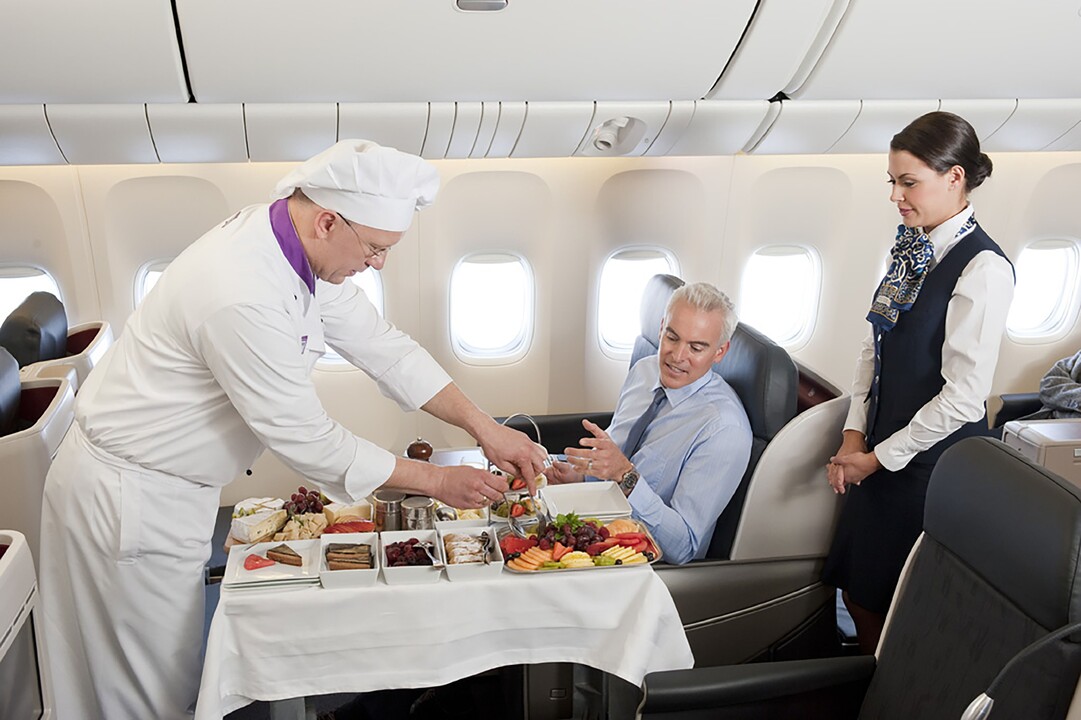
In the realm of air travel, where comfort and convenience are paramount, inflight catering service plays a pivotal role in shaping passenger satisfaction. While travelers often focus on seat comfort, entertainment options, and timeliness, the quality of food and beverage offerings aboard an aircraft quietly yet powerfully influences their overall experience. From the moment passengers take their seats until the flight touches down, the culinary journey can transform an ordinary trip into a memorable one.
Why Inflight Catering Service Matters
Flying, especially on long-haul or premium flights, is about more than just reaching a destination; it’s about the journey itself. The inflight catering service is a key touchpoint that airlines and private operators leverage to elevate this journey. Quality meals, thoughtfully prepared and presented, offer passengers a sense of care and attention that transcends the physical confines of an aircraft cabin.
Food is deeply tied to emotion and culture, and when served well at 30,000 feet, it can evoke comfort, delight, and even excitement. Passengers who receive meals that meet or exceed their expectations are more likely to view the airline favorably, enhancing brand loyalty and encouraging repeat business.
The Elements of a Quality Inflight Catering Service
Delivering high-quality inflight catering service is no small feat. It requires meticulous planning, creativity, and a deep understanding of passenger needs. Quality starts with sourcing fresh, premium ingredients that maintain their flavor and texture even after preparation and packaging for flight. Chefs and culinary experts craft menus that balance taste with nutrition while accommodating diverse dietary requirements—ranging from vegetarian and vegan options to special medical diets and cultural preferences.
Presentation also matters. Attractive packaging and appealing plating can elevate the dining experience, making meals feel less like airplane food and more like a gourmet offering. Attention to detail in service—from timely delivery to courteous interaction—further enhances passenger perception.
The Role of Innovation in Inflight Catering
The evolution of inflight catering service is fueled by innovation, particularly in how meals are prepared, stored, and served. Advances in food technology and logistics have enabled caterers to offer fresher, tastier meals that withstand the challenges of altitude and limited onboard kitchen facilities.
Additionally, customization has become a hallmark of quality service. Passengers increasingly expect personalized menus, whether it’s selecting dishes in advance or enjoying meals tailored to their health goals or taste preferences. Digital platforms now allow seamless communication between airlines, caterers, and passengers to ensure these expectations are met efficiently.
Impact on Passenger Satisfaction
Quality inflight catering service directly influences passenger satisfaction in several profound ways. First, it addresses one of the basic human needs—nourishment—while considering comfort and pleasure. Well-prepared meals can alleviate the fatigue and discomfort often associated with air travel, making journeys more enjoyable.
Second, the availability of diverse and high-quality food options helps passengers feel valued and respected. For instance, offering culturally appropriate meals or accommodating allergies and dietary restrictions signals that the airline prioritizes passenger wellbeing.
Third, the catering experience often serves as a differentiator among airlines and service providers. When flight durations and schedules are comparable, the quality of inflight meals can tip the balance in favor of one operator over another.
Enhancing the Overall Flight Experience
The impact of inflight catering service extends beyond the immediate act of eating. It contributes to the overall ambiance and atmosphere of the flight. A thoughtfully curated menu paired with excellent service can create moments of delight and relaxation, helping passengers feel pampered and cared for.
In premium cabins, inflight catering is often integrated with broader luxury offerings, such as fine wines, specialty coffees, and artisanal desserts. This holistic approach transforms meals into an event, enhancing the prestige of the flight and reinforcing the airline’s commitment to exceptional service.
Even in economy class, improvements in catering quality can positively affect passenger mood and comfort, reducing the stress of travel and creating a more pleasant journey.
Challenges and Considerations
Delivering a high-quality inflight catering service is not without its challenges. The unique environment of an aircraft—limited space, high altitude, and variable temperatures—demands specialized techniques to preserve food safety and flavor. Logistics also play a crucial role, as meals must be prepared on tight schedules and transported securely to aircraft around the world.
Additionally, cost management is essential. Airlines and caterers must balance the desire to offer premium meals with the constraints of budget and pricing strategies. Yet, many recognize that investing in quality catering yields long-term dividends through increased customer satisfaction and loyalty.
Conclusion
Inflight catering service is a vital, though sometimes overlooked, element in the overall passenger experience. Quality food and beverage offerings do more than satisfy hunger—they enrich the journey, foster emotional connection, and influence perceptions of an airline or flight service provider.
As airlines and catering specialists continue to innovate and elevate standards, passengers stand to benefit from tastier, healthier, and more personalized meals at cruising altitude. In doing so, the simple act of eating inflight transforms into a powerful tool for enhancing passenger satisfaction and loyalty, ultimately contributing to the growth and success of the aviation industry.
Travel
Spiritual Tourism in Uttarakhand: Temples, Ashrams & More
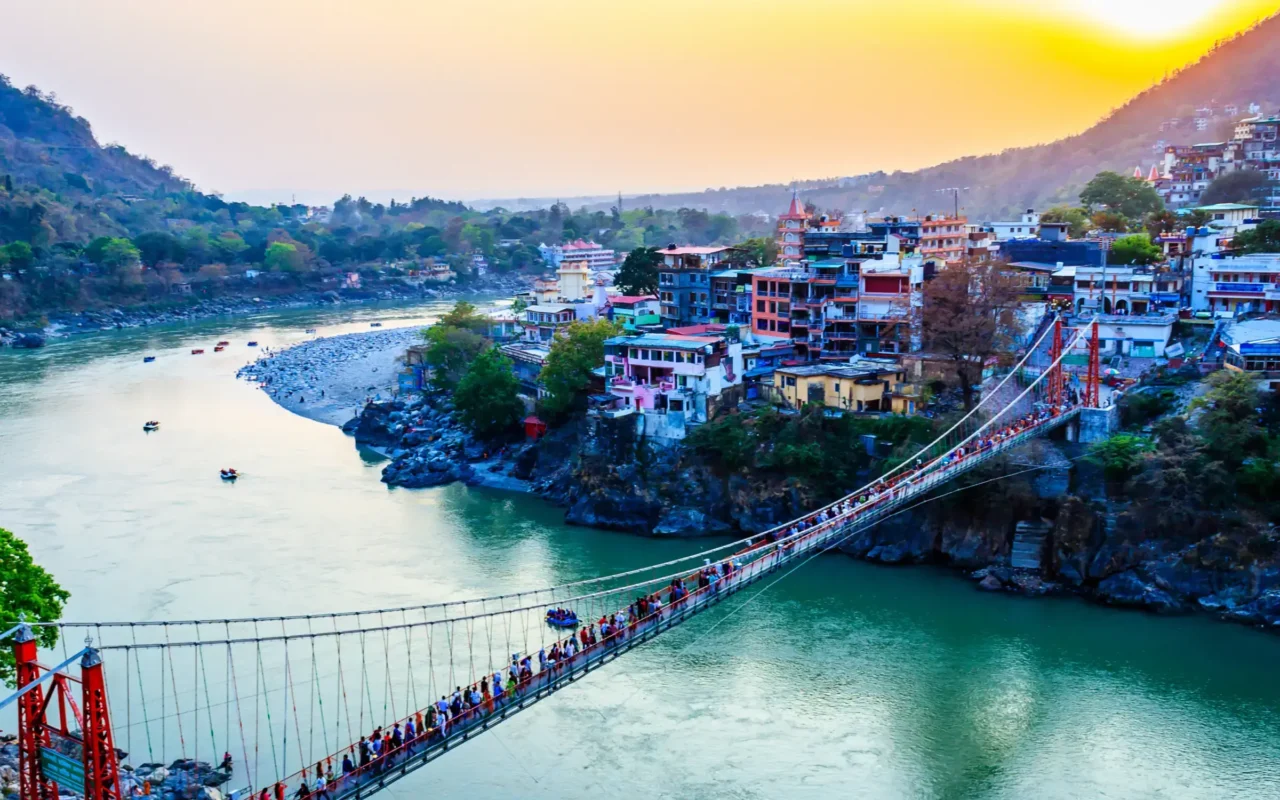
Uttarakhand, often referred to as the “Land of the Gods,” is a haven for those seeking spiritual solace amidst the majestic Himalayas. Known for its serene landscapes, holy temples, ashrams, and sacred rivers, this state offers a deeply spiritual experience for both pilgrims and travelers alike. Uttarakhand tourism is renowned for its rich spiritual heritage, with a diverse range of temples, monasteries, and ashrams that attract thousands of visitors each year. Whether you are a devout pilgrim or a seeker of inner peace, Uttarakhand promises a journey of spiritual rejuvenation.
The Spiritual Heart of Uttarakhand
Uttarakhand holds a prominent place in Indian spirituality and religion, with many sacred sites that date back to ancient times. It is home to several revered pilgrimage circuits, particularly the Char Dham Yatra, which includes Yamunotri, Gangotri, Kedarnath, and Badrinath. These shrines are not only significant for their religious importance but also for the breathtaking beauty of their surroundings, which make the journey even more fulfilling.
Char Dham Yatra: The Ultimate Pilgrimage
The Char Dham Yatra is the most famous spiritual journey in Uttarakhand, and it’s an essential part of Uttarakhand tourism. This sacred pilgrimage circuit is considered the spiritual culmination of a devotee’s life.
- Yamunotri: Dedicated to Goddess Yamuna, this temple is located at the source of the Yamuna River. Pilgrims often take a dip in the hot springs near the temple to cleanse themselves of sins before offering prayers.
- Gangotri: The source of the sacred Ganges River, Gangotri holds immense religious significance. It is believed that Goddess Ganga descended here in her divine form. The serene environment and the flowing Ganges add to the spiritual energy of this place.
- Kedarnath: Nestled in the Garhwal Himalayas, Kedarnath is one of the twelve Jyotirlingas dedicated to Lord Shiva. This ancient temple is surrounded by snow-capped mountains, offering a truly awe-inspiring experience.
- Badrinath: Dedicated to Lord Vishnu, this temple is located in the picturesque town of Badrinath. Pilgrims come here not only for spiritual reasons but also to witness the stunning natural beauty that surrounds the temple.
Visiting these four temples offers a complete spiritual journey and is a major draw for those exploring Uttarakhand tourism. The Char Dham Yatra is a once-in-a-lifetime pilgrimage that leaves devotees spiritually enriched.
The Himalayan Temples: Immersion in Divinity
Beyond the Char Dham circuit, Uttarakhand is dotted with numerous other temples, each with its unique spiritual significance. One such temple is the Mahadev Temple in Rishikesh, dedicated to Lord Shiva. Rishikesh itself is an important hub for spirituality and meditation, attracting seekers from around the globe. The sacred town, known for its temples and the iconic Lakshman Jhula, offers a peaceful retreat for those wishing to connect with their spiritual side.
Another significant temple is the Kainchi Dham in Nainital, which was established by the famous Baba Neem Karoli. The ashram here is a peaceful place for devotees and visitors who seek the blessings of the almighty and a quiet environment to meditate and reflect.
Rishikesh: The Yoga Capital of the World
Rishikesh, often referred to as the “Yoga Capital of the World,” is a spiritual hub that has attracted yogis, saints, and spiritual seekers for centuries. Situated on the banks of the holy Ganges River, Rishikesh is a blend of serene natural beauty and deep spiritual energy.
The Triveni Ghat in Rishikesh is one of the most sacred places, where devotees gather for the evening Ganga Aarti. The sight of thousands of oil lamps floating on the river while chanting prayers fills the atmosphere with divinity. Visitors can also explore the many ashrams in Rishikesh, such as the Parmarth Niketan and Sivananda Ashram, which offer courses in yoga, meditation, and spiritual teachings. These ashrams are perfect for those looking to explore their inner self, offering tranquility and a deeper understanding of spiritual practices.
Ashrams of Uttarakhand: A Path to Inner Peace
Uttarakhand is home to numerous ashrams, each offering spiritual guidance, yoga, meditation, and a way of life that emphasizes simplicity and mindfulness. These ashrams are places where seekers can disconnect from the noise of modern life and connect with their spiritual essence.
- Osho Ganga Dham Ashram in Rishikesh offers teachings based on the Osho philosophy of meditation and mindfulness. It provides an environment where one can explore different forms of meditation, including dynamic and silent meditation, helping individuals connect with their higher consciousness.
- Sivananda Ashram, also in Rishikesh, is another prominent center for spiritual learning and practice. It is part of the global Sivananda Yoga Vedanta Centers and offers teachings on yoga, Vedanta, and meditation. This ashram also hosts the renowned International Yoga Festival annually, attracting spiritual practitioners from all corners of the world.
- Swami Dayananda Ashram, located in the peaceful town of Laxman Jhula, offers classes on Vedantic philosophy, yoga, and meditation. The serene environment of the ashram, combined with teachings on self-realization, makes it a perfect place for spiritual growth.
These ashrams play a crucial role in Uttarakhand tourism by offering spiritual seekers a sanctuary for personal growth, tranquility, and enlightenment.
Haridwar: A Gateway to Spiritual Awakening
Haridwar, situated at the foothills of the Himalayas and close to Rishikesh, is another key spiritual destination in Uttarakhand. It is one of the seven holiest places in Hinduism and is famous for its sacred Har Ki Pauri ghat. Pilgrims from across the country visit Haridwar to take a ritual bath in the Ganges, which is believed to cleanse them of sins.
The evening Ganga Aarti at Har Ki Pauri is a grand spectacle, where devotees offer prayers while the chanting of hymns and the sight of hundreds of floating lamps create an ethereal atmosphere.
Spiritual Treks: Connecting with Nature and Divinity
For those seeking a more physical form of spiritual awakening, Uttarakhand offers several spiritual treks. One such trek is the Kedarkantha Trek, which is a perfect blend of adventure and spirituality. As you trek through dense forests, pristine meadows, and snow-covered trails, you can find moments of peace and solitude that will help you connect deeply with your spiritual self.
Similarly, the Valley of Flowers Trek, a UNESCO World Heritage site, offers a stunning landscape of colorful flowers surrounded by snow-capped peaks. This trek offers an opportunity for spiritual reflection amidst nature’s untouched beauty.
Conclusion
Uttarakhand, with its holy temples, sacred rivers, and peaceful ashrams, offers a unique spiritual experience for those seeking inner peace and divine blessings. Whether it’s the revered Char Dham Yatra, the tranquil ashrams of Rishikesh, or the serene temples tucked away in the Himalayan foothills, Uttarakhand tourism provides countless opportunities to explore the spiritual heart of India. For spiritual seekers, pilgrims, and those simply looking for a deeper connection with themselves and nature, Uttarakhand is a destination that will nourish the soul and leave an everlasting impact.
-

 Sports4 months ago
Sports4 months agoThe Ultimate Guide to Ski and Snowboard Equipment, Ski Equipment Rental, and Snowboard Equipment Rental
-

 Entertainment7 months ago
Entertainment7 months agoHulu Error Code Rununk13: A Complete Guide
-

 General7 months ago
General7 months agoStart-094: Unlocking Its Secrets and Understanding Its Power
-

 Entertainment5 months ago
Entertainment5 months agoSoaper.tv: A Comprehensive Guide to Your Streaming Companion
-

 Games5 months ago
Games5 months agoPizza Edition Games: The Ultimate Guide to Fun and Flavor
-

 Uncategorized5 months ago
Uncategorized5 months agoOceanofPDF: Free eBooks Source or Copyright Violation?
-

 Technology7 months ago
Technology7 months agoWhy SBCodez is the Go-To Resource for Aspiring Coders
-

 Apps7 months ago
Apps7 months agoWeb & Store Synergy: The Ultimate Guide to Blogging for E-commerce
